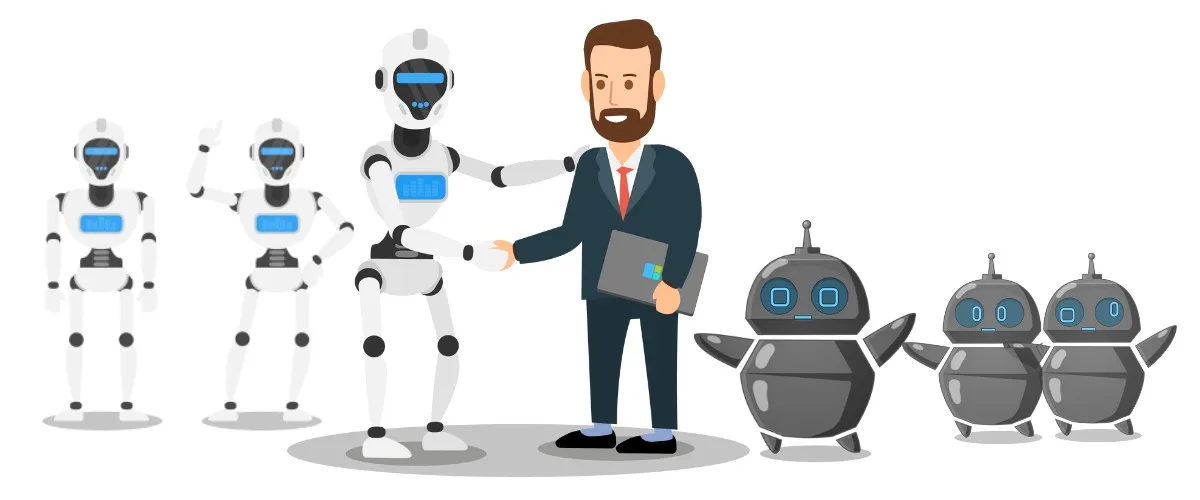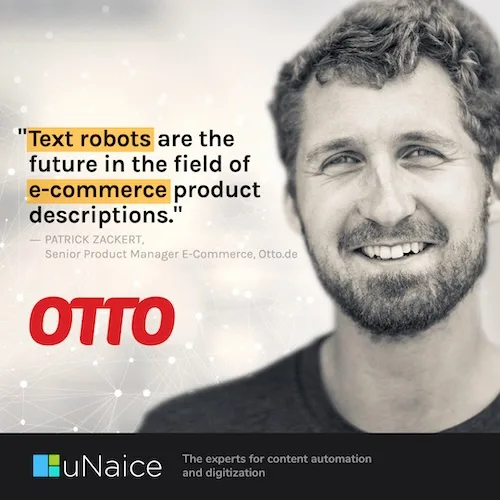uNaice, The Gamechanger in Italian E-commerce: “Creating content by hand today is pure madness.”
What are the changes here, what are the current trends?
The trend is that more and more e-commerce companies are becoming aware of how important their content is and the impact it has on visibility and conversion rates. For this reason, their awareness of the fact that the introduction of content automation is an absolute necessity is also growing.
The only thing being discussed at the moment is how, in what form and by what means. Content automation is currently in the experimental phase. This is also the testing phase in which the AIs are also tested. Not all AI is created equal, and the text robot is a completely separate language model

because he generates his texts exclusively from data, which means: no prompt, no editing at all. Only data. Cleaned, structured and optimized data. Only customer data is used, not randomized data from the network.
The text robot is an individual machine, and also with an algorithm that is programmed individually and based on the wishes of the customers. Which is why he generates exactly the texts that customers want, according to their requirements. They end up exactly in the chosen back-end and are exactly as the customers want them: in their style, with the right Brand Tonality, etc. …
Of course, they are grammatically correct and without spelling mistakes – this is now one of the minimum requirements that a language model should meet.
How does uNaice help online retailers save time and money?
Quite simply: via the scale effect of the texts, which is directly proportional to the price reduction per generated text. However, our customers do not pay according to the generated text, but according to the number of attributes to be used.
Who can translate their content into 110 languages with a simple click of the mouse and also track the data in the respective language? Who can manually create 500,000 new texts with one mouse click? Nobody! It would be sheer madness to create thousands of product texts by hand and then translate them. The quality suffers, there is duplicate content and also on SEO level the consequences are negative.
Not to mention that handwritten texts always need to be corrected and can never be created in the same quantity as with the text robot. And definitely not with the click of a mouse. We are talking about automation. Customers no longer have to do anything. You can look forward to flawless, unique and SEO-optimized texts that increase the conversion rate while simply reducing the effort (time, money, personnel).
What are the main features that set uNaice’s technology apart from others?
The main USP is that the text robot only needs data to work correctly. This data must be structured so that it can be read by the machine and converted into text. Which means: no prompt, no editing at all. Input in the form of data, output in the form of text. This is how the text robot works.
Another USP is that, based on rules and data mapping, the engine generates informative, significant text from data that brings customers to the exact product they are looking for. This includes the generation of correct URL and optimization for the search engines.
The super-short time-to-market, real-time internationalization and scalability of data and texts should also be noted. Last but not least, the costs – if one wanted to calculate them – are a few cents per text. Customers should think in the long term – then the text robot is a strategic solution that not only proves profitable, but also frees up many resources for other projects.
Could you give an example of how uNaice has helped customers optimize their content production processes?
We’d love to: at our customer Otto, for example. Otto contacted us 5 years ago with a request for product descriptions of its category “sofas and seating sets”. The category contained about 2500 items. At the time, Otto had 3 different sales channels targeting different buyer personas. In addition, each individual item could be configured in a variety of ways. In other words, all the sofas and sofa sets had several extras: either a LED light, or use as a bed, or they were made of different materials, and so on. …

For the text robot, this meant that the 2500 original articles became 7500 for the 3 different distribution channels. After entering all possible configurations, however, there were about 90,000 individual texts in total. With a single click of the mouse. Otto was amazed and admitted: “Not even in six months would we have managed to write 90,000 texts by hand.” After that, of course, they immediately continued with the category of bathrooms and plumbing.

